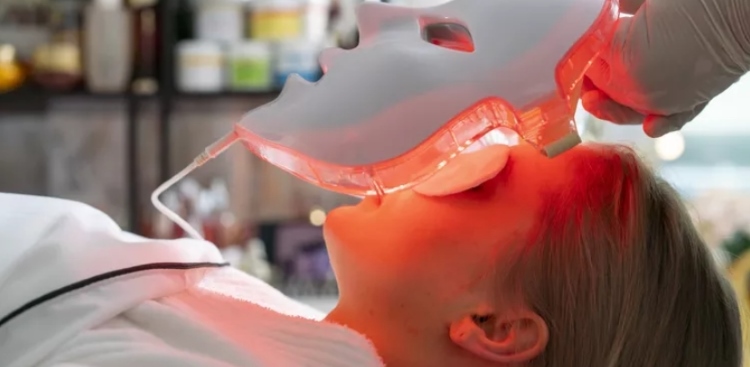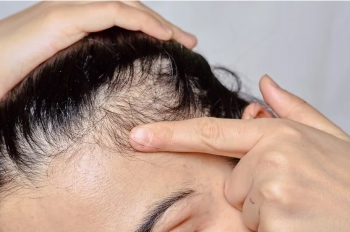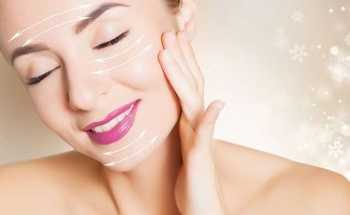Over the past five years, there has been a massive explosion when it comes to the use of LED (Light Emitting Diodes) treatment. LED Light Therapy is an effective and gentle skin treatment method that can be compared to Low-Level Laser Therapy. To use this skincare treatment method, you need an LED light therapy device.
Besides the in-clinic LED Skin-care Devices, there are many LED light therapy devices designed for home use. And their affordability has led to the recent increase in the incorporation of LED light therapy in skincare routine.
So, do LED treatments really work? And what does LED light therapy do? Get the answers plus more in this article.
Table of Contents:
- Part 1: What is LED Light Therapy?
- Part 2: How Does LED Light Therapy Work?
-
Part 3: What Conditions Can LED Light Therapy Treat?
What is LED Light Therapy?
 Light-emitting diodes basically are like mini lasers. They offer a specific wavelength or wavelengths and they’re usually in the blue, yellow light, and red light spectrum. These wavelengths treat certain conditions better than others.
Light-emitting diodes basically are like mini lasers. They offer a specific wavelength or wavelengths and they’re usually in the blue, yellow light, and red light spectrum. These wavelengths treat certain conditions better than others.
LED light therapy relies on LED devices which are available as masks, wands, and hand-held products. Like the IPL at-home devices, LED light devices do not burn the skin.
Light Emitting Diode light therapy is a common skincare treatment method in dermatologist’s clinics and at home. This technology works on all skin colors even though individual colors respond to LED lights differently and it is safe for the skin.
For better results, dermatologists combine LED light treatment with other skin treatments like ointment, creams, and facials. As a precaution, always shield your eyes from LED light for the light can be harmful if you’ve got an underlying skin condition.
How Does LED Light Therapy Work?
 First, different LED light colors penetrate the skin to different depths. LED devices produce a spectrum of light wavelengths. Depending on the LED light color, the wavelengths penetrate the skin triggering changes at the skin molecular level.
First, different LED light colors penetrate the skin to different depths. LED devices produce a spectrum of light wavelengths. Depending on the LED light color, the wavelengths penetrate the skin triggering changes at the skin molecular level.
These wavelengths produce different colors that target specific skin concerns. Generally LED devices whether for in-office or at-home use are designed to produce a certain light color. What are the effects of these colors on the skin?
-
Red LED Light Therapy
Red light stimulates the production and circulation of collagen. This light works on the epidermis. The light absorbed by the epidermis leads to the production of collagen which makes the skin appear smoother and look fuller. This reduces the appearance of wrinkles and fine lines.
-
Blue LED Light Therapy
Blue light therapy is has shown to destroy bacteria and fungi on the skin thus reducing skin infection. The light penetrates the skin killing harmful bacteria without affecting the surrounding skin tissues. Blue light has for many years been used to treat skin conditions such as acne and reduce inflammation, and psoriasis.
-
Yellow LED Light Therapy
According to the National Library of Medicine, yellow light speeds skin healing after laser microneedling. Yellow light of wavelength between 560 nm to 590 nm penetrates the skin to the deepest layer thus tackling skin issues from the root cause.
Using yellow light therapy helps reduce inflammation, and redness, boost skin hydration, and firm sagging skin.
What Conditions Can LED Light Therapy Treat?
LED light therapy is a non-invasive technique that uses varying wavelengths to treat skin conditions such as:
1. Acne
 LED light therapy has the potential to treat acne because the bacteria in acne known as C.Acnes produce chemicals known as porphyrins which are activated. The bacteria in the activated porphyrins are killed by the products that they produce.
LED light therapy has the potential to treat acne because the bacteria in acne known as C.Acnes produce chemicals known as porphyrins which are activated. The bacteria in the activated porphyrins are killed by the products that they produce.
In the context of acne, there are two wavelengths that can be effective:
- Blue
- Red
Studies have shown that blue is more effective than red. However, a combination of blue and red gives a better outcome. So, a blue light treatment typically takes about 7-12 minutes to treat and should be done 3-4 times per week. The same treatment intervals apply for red.
If you’ve got a dark skin type, or if you’re Asian Middle Eastern, or African extraction, you’ll have a receptor on your cell and you’re skin pigment cell is sensitive to blue light. When you use blue light in these ethnic populations, you can improve acne but on the flip side, it can worsen post-acne pigmentation or post-inflammatory hyperpigmentation.
To avoid post-acne pigmentation worsening, Dr. Davin Lim recommends using red light treatment not because it’s more effective than blue but because it’s a lot safer. Of all the conditions, acne has the highest amount of evidence.
2. Scalp
 Scalp or androgenetic alopecia can be treated using red light therapy. For patients who are suffering from male or female pattern baldness, red light treatments using light-emitting diodes or using low-level laser therapy can work.
Scalp or androgenetic alopecia can be treated using red light therapy. For patients who are suffering from male or female pattern baldness, red light treatments using light-emitting diodes or using low-level laser therapy can work.
Most patients require 3-4 sessions per week and each of these sessions may take between 12-24 minutes. Red light therapy can slow down balding and it can slow down hair loss. It’s best used for genetic cases of hair loss. Most studies advocate the use of LED Caps or helmets compared to a handheld comb purely because of compliance.
3. Skin Rejuvenation
 Skin rejuvenation is essentially touch and go. There are many devices out there using blue light, yellow light, and red light. The main challenge in using these devices is their limited studies on them. However, dermatologists do use these lights to decrease inflammation in the skin and aid in healing.
Skin rejuvenation is essentially touch and go. There are many devices out there using blue light, yellow light, and red light. The main challenge in using these devices is their limited studies on them. However, dermatologists do use these lights to decrease inflammation in the skin and aid in healing.
Patients with early scarring that could be scarring from acne inflammation of the skin from conditions such as Rosacea. Inflammation from your skin secondary to procedures such as lasers, radio frequency microneedling, chemical peels, radio frequency, and microneedling can benefit from light treatments.
The wavelength of light that does best is yellow light because yellow light helps in decreasing inflammation and accelerating healing, and in some situations, it increases the production of collagen.
If you’re not using light-emitting diodes to treat any of the above conditions, but you want to stimulate collagen production, the amount of collagen stimulated is very small compared to using lasers.
If you’re looking for LEDs from the rejuvenation point because you want to treat wrinkles, the efficacy of light-emitting diodes is much less compared to treating scarring from acne inflammation. Instead of buying LED devices to treat wrinkles, look for other alternatives to stimulate collagen production such as injectables, lasers, chemical peels, and clinical strength skin care.
Conclusion
Although most dermatologists believe in LED light therapy, LED devices are used very cautiously when working on skin rejuvenation. Use LEDs mostly for aiding skin healing, and treating alopecia, acne, and hair loss. According to Harvard, red LED lights act on cells (fibroblasts) responsible for the production of collagen which helps the skin to heal when harmed.

 By myulikeadmin
By myulikeadmin



